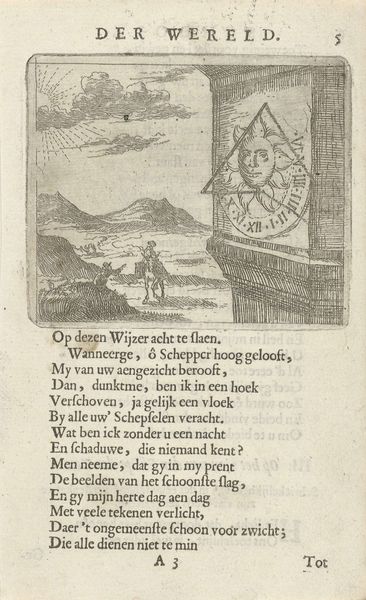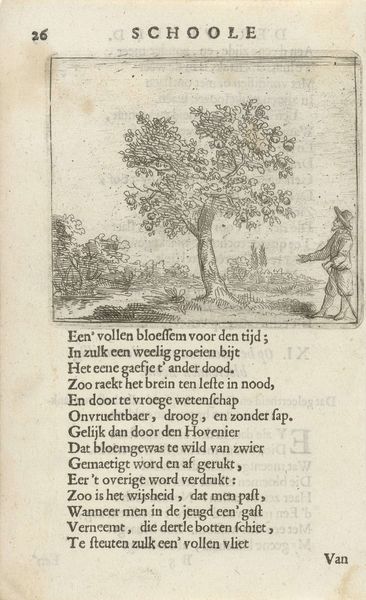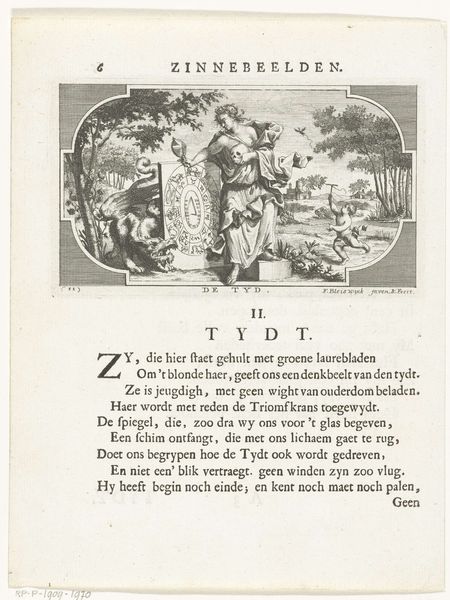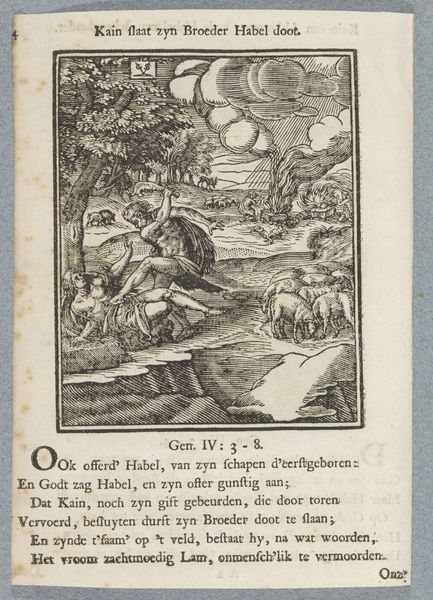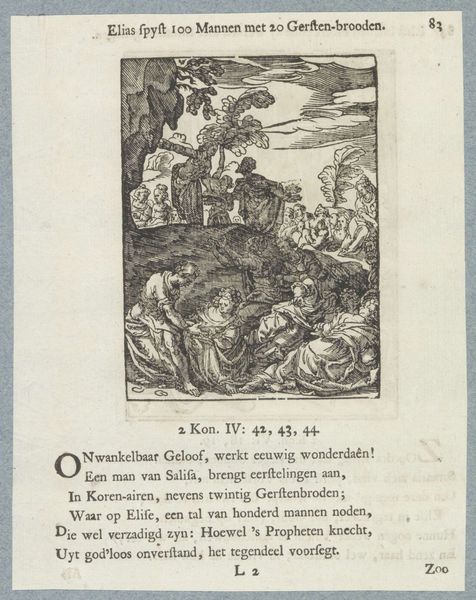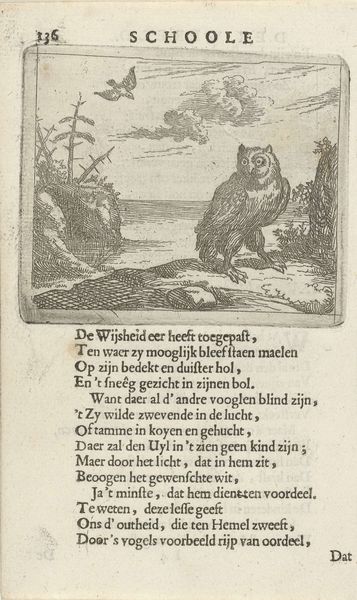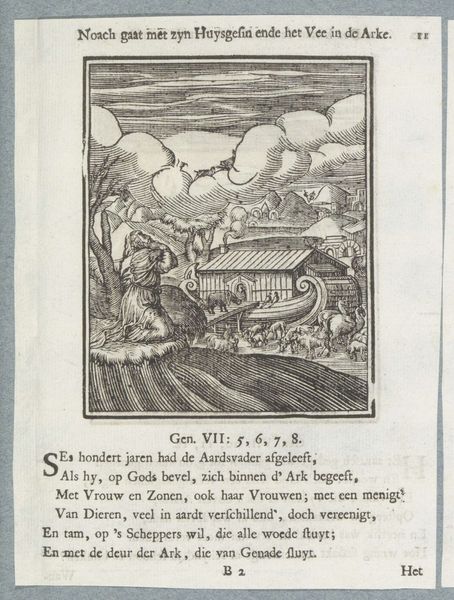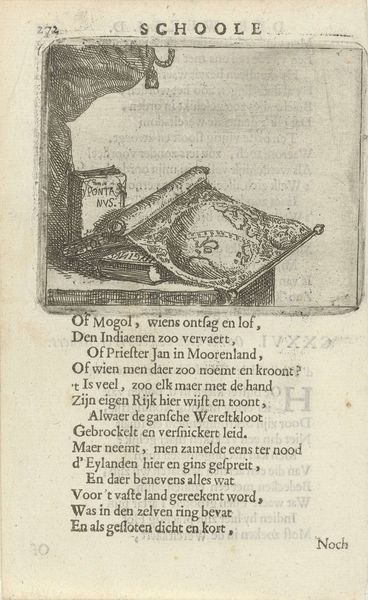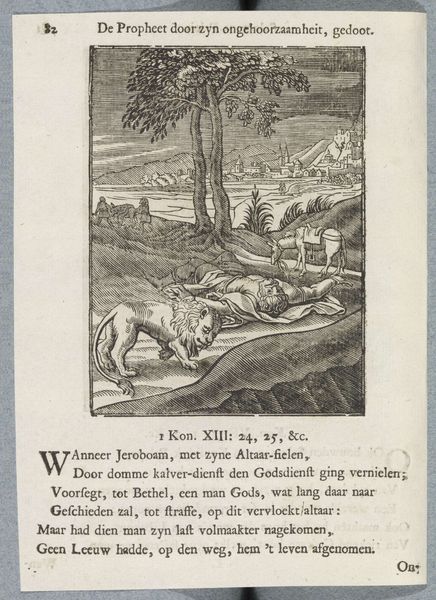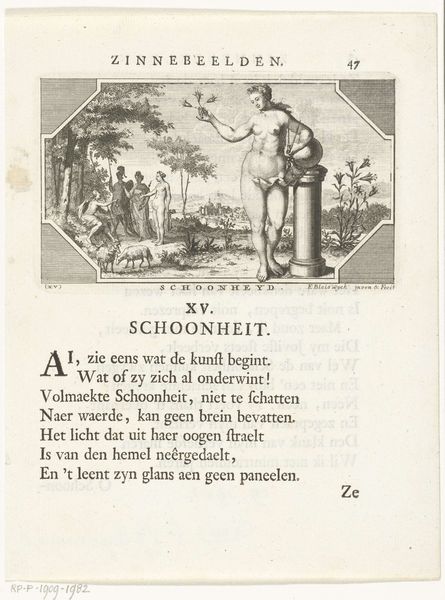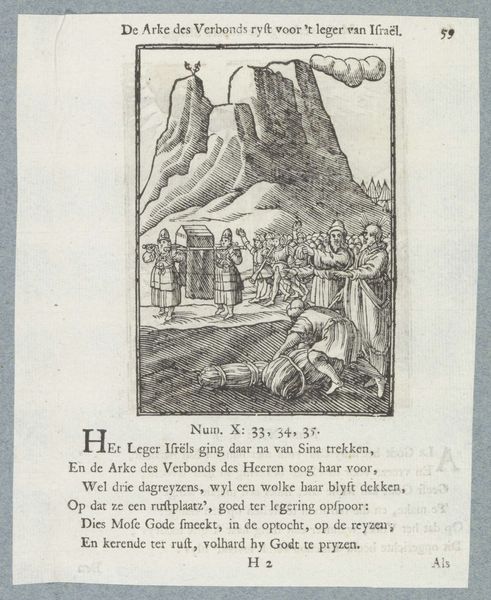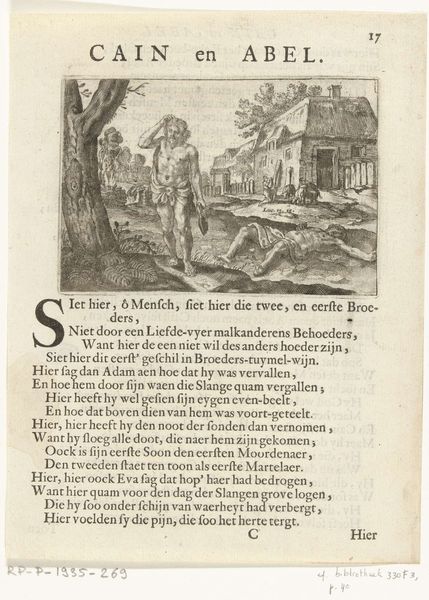
print, engraving
#
baroque
#
animal
# print
#
landscape
#
engraving
Dimensions: height 71 mm, width 84 mm, height 146 mm, width 96 mm
Copyright: Rijks Museum: Open Domain
Editor: So, this is "Man stalking a porcupine," an engraving by Arnold Houbraken from 1682, housed in the Rijksmuseum. It’s surprisingly… whimsical for a scene about hunting. The landscape is simple, almost cartoonish, but that makes it all the more intriguing. What strikes you most about this piece? Curator: Whimsical is a great word for it. Houbraken's landscapes always have a slightly otherworldly quality, don't they? It’s not just a hunting scene, though. Think about the period. The Dutch Golden Age was ending. There’s a real shift happening in art and culture. What do you think Houbraken might be saying about human ambition or perhaps the hunt itself with this almost playful depiction? Editor: I hadn't considered the historical context so deeply. I was mainly looking at the direct scene - the hunter seems comically cautious, almost as if he's more afraid of the porcupine than the other way around! Is there any deeper symbolism at play here? Curator: Absolutely! The porcupine, with its defenses, could symbolize resilience, self-protection. Maybe even a quiet resistance against the encroaching "hunter"—a metaphor for societal pressures or the end of an era? Consider that while the man *appears* to be in control, his furtive movements suggest a certain vulnerability or awareness of the animal’s strength, or cunning. He almost becomes comical. Editor: So, it’s not just a simple hunting scene. It's more of a reflection on power dynamics and the subtle ways individuals resist, wrapped up in this playful Baroque package. That gives it a totally new dimension for me! Curator: Exactly! And maybe it’s about the artist too! Houbraken was a theorist, a writer, not just a painter; perhaps there’s an element of sly self-awareness, of watching from the bushes ourselves…
Comments
No comments
Be the first to comment and join the conversation on the ultimate creative platform.

